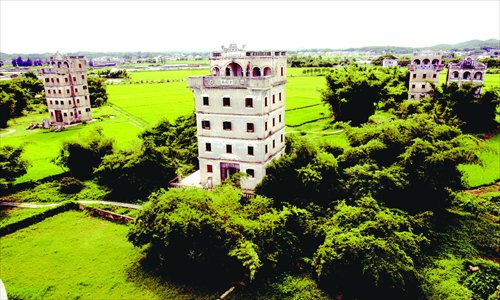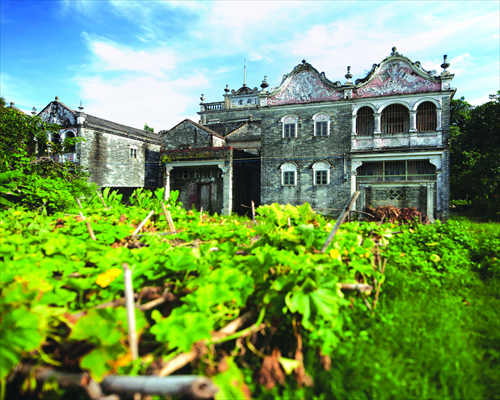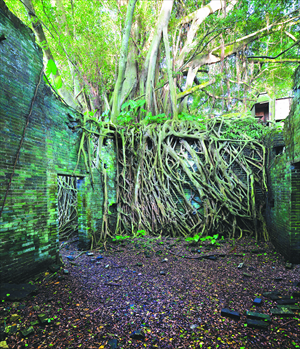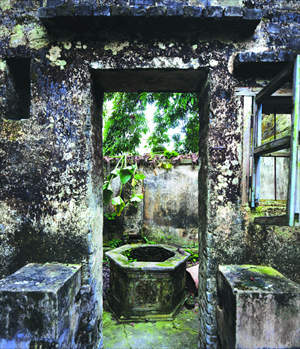Deserted villages
Global Times | 2013-9-17 22:33:01
By Global Times
<center>

</center>
Global Times | 2013-9-17 22:33:01
By Global Times
<center>

</center>
Diaolou towers under local government protection in Kaiping, Guangdong Province Photo: IC


<center></center>
Guan Woqiang, one of the last holdouts of Fuheli village in Kaiping, Guangdong Province, walks past a Diaolou tower used to stock hay. Photo: IC


<center></center>
An abandoned house stands amid plants in the empty Canada village, Kaiping, Guangdong Province. Photo: IC

<center></center>
Tree roots entwine a roof of an abandoned house in empty Dengbian village, Kaiping, Guangdong Province. Photo: IC


<center></center>
A water well in a deserted house in the empty Canada village, Kaiping, Guangdong Province Photo: IC
But for some landmark watchtowers standing lonely, you could hardly believe that it used to be a prosperous village. Thick crowns cover the roofs of most houses, the roots of banyan trees entwine the walls, green bricks and rotten wooden ruins lie under various plants.
Taken over by vegetation, Dengbian village, Kaiping, South China's Guangdong Province, is more like a botanical garden. This has not happened only to Dengbian, but several other villages in Kaiping, home to 750,000 overseas Chinese from 67 countries and regions.
In the 1920s and 1930s, young villagers flooded to Western countries to seek their fortune. Meanwhile, they sent or brought earnings back to build houses and enrich the village. This gave birth to a unique fortified, multi-story piece of architecture named Diaolou Towers that sprang up all around.
However, as the villagers and their offspring either settled down overseas or moved to larger cities, these villages became empty and abandoned as the buildings deteriorated, except for welcoming occasional origin-search visits.
Less than 7 kilometers away from the city Kaiping, the 130-year-old Dengbian village was completely abandoned after the last two families moved out in 1998. A sign set up at the entrance to the village tells travelers that the village is deserted.
In Fuheli, the neighboring village to Dengbian, Guan Woqiang and his younger brother are the only two households left since 2005. They live a quiet life except for holiday reunions with their children.
For Guan, except for two dogs and a few dozen chickens, an old outdated television is his only companion and a precious channel to know about goings-on in the outside world.
Affection for their hometowns and the sense of belonging that comes with age are declining among modern people.
Guan said they will also move to town one day. Fuheli will likely follow the fate of Dengbian and disappear.
Last year, Chinese Folk Literature and Art Society Chairman Feng Jicai made a public statement that the decline of rural villages had been astonishing as residents flocked to towns and cities. In 2000, there were more than 3.6 million villages in China, but in 2010, the number dropped to 2.7 million, with more than 900,000 villages becoming deserted. This is equivalent to 300 villages vanishing every day.
Fortunately, some villages have come under government-funded protection. The towers in Kaiping were added to the UNESCO World Cultural Heritage Site list in 2007 and have become noted scenic spots. Nevertheless, due to the huge cost to preserve the relics, the local government was reportedly unable to make ends meet in 2010. What will happen to the watchtowers in the near future can only be guessed at.
